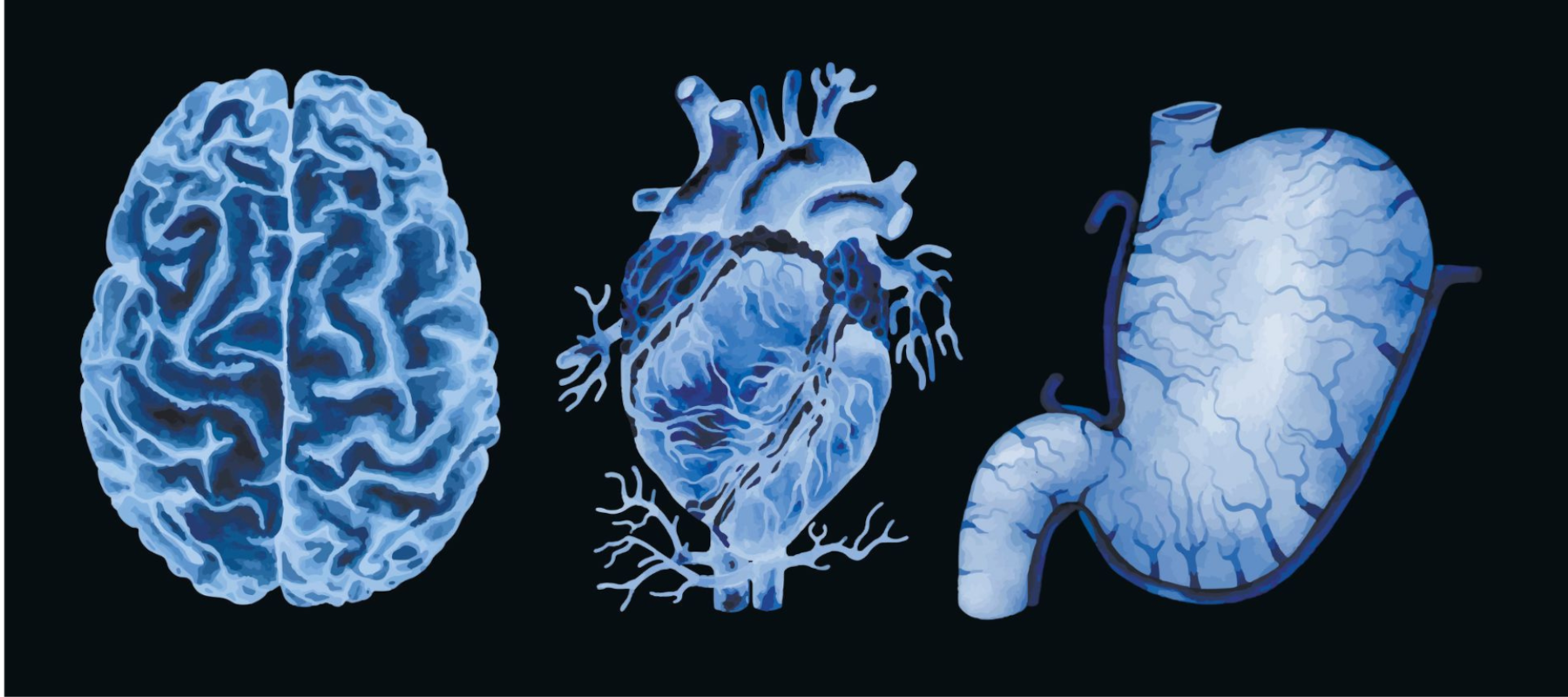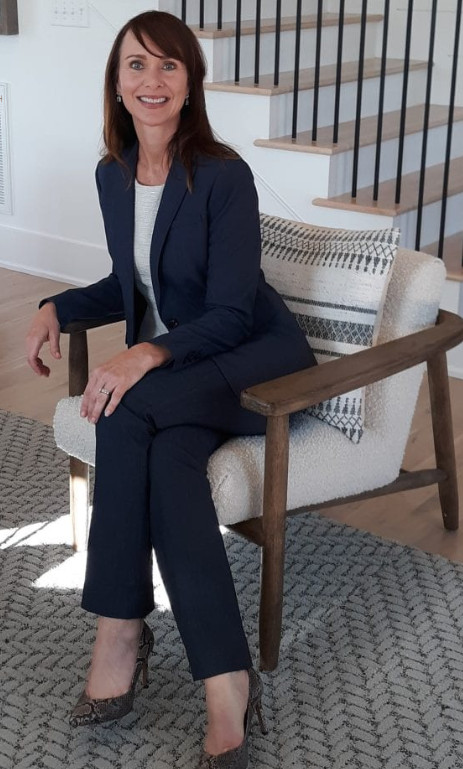The Whole‑Brained Leadership Approach
Contact us

Would you field a sports team with only a third of the allowed players Or begin a long trip with one-third of the gas tank full? Of course not. Great leaders know the best outcomes are the application of all available resources…

And yet, for generations, even the most celebrated leaders have been accessing, at best, a third of the information at their disposal for decision-making, change management, and support of their teams by relying almost solely on their IQ.
It’s time to boost our output by learning to access all THREE of our brains.
Yes, three.
Over the last few decades, the field of neuroscience has discovered that while we previously thought humans had only one brain (in our head), we actually have two more. One in our heart region and one in the gut. Each brain has a number of functions it serves best.
Using them TOGETHER determines the fullness of your leadership capacity, your ability to problem solve in collaborative ways, your company’s culture, and many other aspects of having the influence, impact, and outcomes you desire both personally and professionally. This is the Whole-Brained Leadership Approach.

IQ: Chief Head of State - The Intelligence Quotient
The head brain covers cognitive perception and meaning-making. It is where we connect thoughts, ideas, and experiences. Certifications, exams, acquired skills and the stories we carry about our past experience belong to the realm of IQ.
In the world in which the majority of us have been raised, we have been taught to target and hold in the highest regard the development of what we can build, attain, process, and deliver from our cephalic brains. The IQ has reigned supreme. However, this myopic focus has truncated the growth and expansion of other ways in which we, as humans, were designed to collect and process vital information.

EQ: HUMAN-SKILL EMERGENT - The EMOTIONAL Quotient
Our heart brain is meant to take the lead on emotional processing on values and our connection with others. It is the source of our passion and compassion.
EQ focuses on our ability to genuinely connect and build trust and rapport within our human relationships (with others and with ourselves). Without this, we aren’t motivated to stick around, learn and grow through engagements, and work through to a conclusive solution. We simply bolt, taking our habits and beliefs with us, only to repeat them again and again. EQ in leadership allows for the capacity to understand, manage, and utilize our emotions to effectively connect with others and move things towards positive outcomes. It also is the center of our WHY, as it connects us with our passions and purpose.

PQ: GUARDIAN OF INSTINCT - The PERCIPIENCE Quotient
The gut brain is designed to focus on our sense of self, on self-preservation, and on our physicality. It is the root of self-trust and courage. PQ is our instinctive ability to cut through the vagueness of what is unknown to our other quotients to find certainty in what we intuit. It moves us outside the box to do what we sense is right.
Some of the world’s greatest leaders have learned to trust their hunches and followed their instincts, even when what they sensed flew in the face of what appeared to be the most rational and realistic solution. This ability to override the heavily conditioned values of the IQ is the very thing, much of the time, that has great leaders standing out from the rest.

Take the fully intelligent approach to:
STRATEGY & GROWTH:
When your team and its leaders operate from all of their intelligences, your mission and values stay at the forefront as you scale. And growth becomes an inevitable outcome of everyone working at their best.
TALENT ACQUISITION & RETENTION:
INNOVATION & ADAPTABILITY:
AND SO MUCH MORE…
Meet Traci Philips:
As an Executive Leadership and Performance Coach to Visionaries, Traci has helped countless corporate and business professionals successfully and consciously lead and communicate who they are with integrity and truth. She has developed unique ways to recognize and translate patterns in thought, emotion, language, and behavior that can lead to successful outcomes.

GET TRACI ON YOUR TEAM
Traci helps visionary leaders understand how to access and decode the information presented to them from each of their centers of intelligence to ensure that they are making more whole-brained decisions and taking action on as much of the information available to them as possible.
In both individual coaching programs and leadership team trainings, Traci uses these steps to move your company into the next level of thinking, profitability, and success by understanding and accessing Whole-Brained Leadership.
- Awareness – What is my predominant intelligence? What about the rest of my team? How does it support my individual value within the team? How might it hinder team performance?
- Application – How do I access each of my intelligences? How do I best support my colleagues to do the same?
- Acceleration – Watch as your team increases its performance, develops a more collaborative and effective approach, and supports common goals towards the overall success of the organization.

Awareness
40-60 minutes
An introduction to 3 Brain Research and its significance to organizational change and leadership development.
Application
1-Day Workshop
Each member of your team discovers their default brain and how it affects how they work together through practical exercises and custom scenarios.
Acceleration
Multi-Day Intensive
Fully integrate the whole-brained approach into your company culture through this customized program that fits your company’s specific needs.

3-BRAIN RESEARCH & ORGANIZATIONAL LEADERSHIP: AN INTRODUCTION
TOPICS COVERED
The Why – We are talking about this today because…
- Each brain accesses different information. More info = Better decisions
- The whole-brained approach determines the fullness of your leadership capacity, your ability to problem solve in collaborative ways, your company’s culture, and many other aspects of having the influence, impact and outcomes you desire both personally and professionally.
- Understanding these concepts supports your company’s mission as it pertains to Strategy & Growth, Talent Acquisition & Retention, Innovation & Adaptability & more.
The Science – Neuroscience around the 3 Brains
The Brains – What information does each access, what are their jobs and how does each perspective work together to provide “the whole” reality of a situation/experience.
What’s Your Predominant Brain? – A high-level overview of how to discover your predominant brain type.
Additional resources – Tools, training and other resources based on client need and interest.
Outcomes
- Understand the process of decision-making from a broader and more refined perspective based on the Whole-Brained Approach.
- Better comprehend how team conflicts can stem from differences in information perspective and default processing patterns.

WORKING WITH BRAIN PERSPECTIVE & PREDOMINANCE IN GROUPS
TOPICS COVERED
The Why – We are talking about this today because…
- The Whole-Brained Approach determines the fullness of your leadership capacity, your ability to problem solve in collaborative ways, your company’s culture, and many other aspects of having the influence, impact and outcomes you desire both personally and professionally.
- Understanding these concepts supports your company’s mission as it pertains to Strategy & Growth, Talent Acquisition & Retention, Innovation & Adaptability and more more.
- Moving from conceptual understanding to interactive application and experience allows participants to better integrate the knowledge and work with it at a deeper and more meaningful level.
The Science – Helping participants understand the 3 Brains and their impact on decision-making and group dynamics.
The Brains – What information does each access, what are their jobs and how does each perspective work together to provide “the whole” reality of a situation/experience.
Scenarios – To deepen understanding, we’ll look at several scenarios applicable to your company/group to stimulate consideration and demonstrate how different perspective types affect group experience.
What’s Your Predominant Brain? – A self assessment approach and deeper dive into understanding your Perspective Type and how it influences your decision-making.
How to Detect OTHERS’ Perspective Types – To enhance understanding, communication and dynamics, it’s important to realize that everyone sees the world, first, through their predominant intelligence. Knowing the value of each perspective helps us to consider where it’s most valuable and how it can be best utilized and valued.
The importance of BALANCED PERSPECTIVE in conversation, teamwork and company culture.
Additional resources – Tools, training and other resources based on client need and interest.
Outcomes
- Think differently about the value of perspective differences, group dynamics when it comes to understanding things and the Whole-Brained Approach to making better decisions.
- Begin to consider how team conflicts may stem from differences in default information-processing patterns.
- Define, communicate and advocate for your particular perspective and the perspectives of others.

integrating the 3-brain approach into company culture
Day 1
The Why – We are talking about this because…
- The Whole-Brained Approach determines the fullness of your leadership capacity, your ability to problem solve in collaborative ways, your company’s culture, and many other aspects of having the influence, impact and outcomes you desire both personally and professionally.
- Understanding these concepts supports your company’s mission as it pertains to Strategy & Growth, Talent Acquisition & Retention, Innovation & Adaptability & more.
- Moving from conceptual understanding to interactive application and experience allows participants to better integrate the knowledge and work with it at a deeper and more meaningful level.
The Science – Helping participants understand the 3 Brains and their impact on decision-making and group dynamics.
The Brains – What information does each access, what are their jobs and how does each perspective work together to provide “the whole” reality of a situation/experience.
Scenarios – To deepen understanding, we’ll look at several scenarios applicable to your company/group to stimulate consideration and demonstrate how different perspective types affect group experience.
What’s Your Predominant Brain? – A self assessment approach and deeper dive into understanding your Perspective Type + how it influences your decision-making.
How to Detect OTHERS’ Perspective Types – To enhance understanding, communication and dynamics, it’s important to realize that everyone sees the world, first, through their predominant intelligence. Knowing the value of each perspective helps us to consider where it’s most valuable and how it can be best utilized and valued as well as the importance of BALANCED PERSPECTIVE in conversation, teamwork and company culture.
Outcomes
- Think differently about the value of perspective differences, group dynamics when it comes to understanding things and the Whole-Brained Approach to making better decisions.
- Begin to consider how team conflicts may stem from differences in default information-processing patterns.
- Define, communicate and advocate for your particular perspective and the perspectives of others.

Day 2
Scenario work – Targeted to actual issues/decisions/etc happening within the company.
Day 3
Leadership Development Model – The application of The Whole-Brained Approach to Leadership Development frameworks.
Day 4
What Does Success Look Like?
- Being a Whole-Brained Organization – A look at the company’s values, mission, on-boarding, marketing, etc through the lens of the Whole-Brained Approach.
- Strategy & Planning – Determining KPIs and plans for becoming a Whole-Brained culture.
Day 5
A wrap-up session with the Owner/CEO/Key Leaders to lay out their roles in cultivating, supporting and promoting their Whole-Brained Approach culture. Determining what future support may be needed to achieve maximum accountability and success.
Outcomes
- Think differently about how you subscribe meaning, make decisions, communicate and engage.
- Understand how team conflicts may stem from differences in perspectives and default processing patterns.
- Quickly recognize appropriate methods for utilizing the value of different perspectives, as well as how to make effective group decisions and resolve conflicts.

